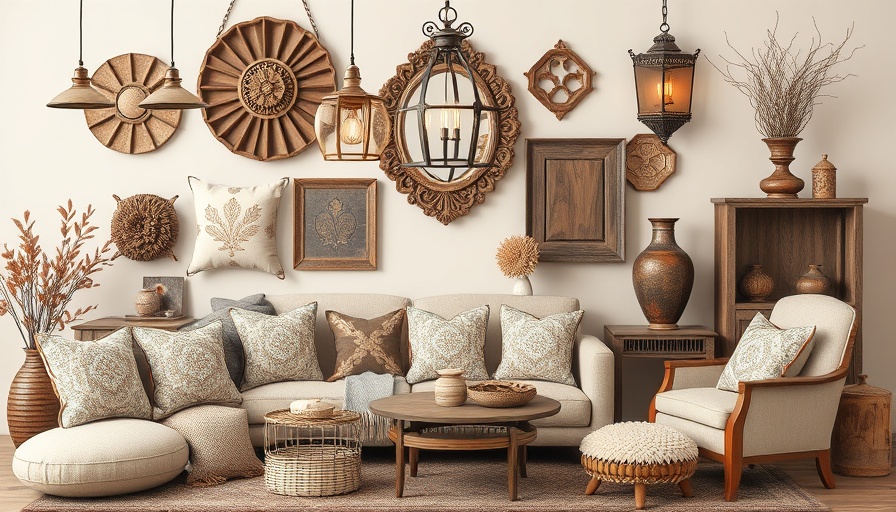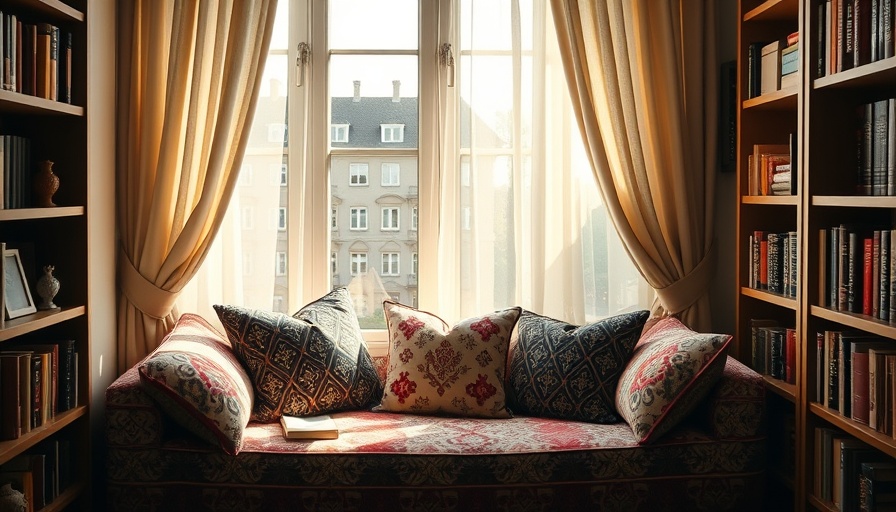
The Art-First Approach to Home Improvement
Home improvement projects can often feel overwhelming. Whether it's repainting walls or replacing furniture, homeowners frequently find themselves unsure of how to pull it all together. A surprising yet effective solution? Starting with art. By choosing a piece of art that resonates personally, you set a tone that guides subsequent design decisions, making the entire process feel intentional and satisfying.
Selecting Your Signature Piece
Begin your design journey by selecting artwork that evokes emotion. Whether it's a vibrant abstract painting that stirs joy or poignant black-and-white photography that speaks to your soul, the choice ultimately frames your home's atmosphere. From this piece, you can derive your color palette—pull two main colors and an accent color directly from your chosen art, helping you align paint, textiles, and even decor objects to an overarching theme.
Room-Specific Strategies for Integration
Each room in your home presents unique opportunities and challenges when integrating art. In the living room, create a focal point by placing your artwork prominently where it is immediately visible upon entry. Use a paint color derived from your art to enhance this visual anchor, ensuring it stands out without overwhelming the space. Consider adding floor lamps aimed toward the art to create depth and mood, setting the scene for relaxing or entertaining.
In more practical settings like the kitchen, art can still shine without impeding functionality. Select smaller pieces in clean, dry spots to infuse life into this often utilitarian room. A simple shelf featuring a framed print can serve both aesthetic and practical purposes, while a micro-renovation, such as replacing a cabinet with open shelving that displays a beautiful bowl alongside art, lightens the atmosphere.
Creating Calm in the Bedroom
The bedroom is a sanctuary and should reflect tranquility. Above the headboard, opt for horizontal pieces or a calm diptych that contributes to the ambiance. Consider materials like linen mats or light wood frames that absorb sound and visual clutter, enhancing the calm. For a bolder touch, paint the wall behind the headboard in a deep hue lifted from your art, adding depth and drama.
Conclusion: Let There Be Light
Art deserves to be highlighted, and effective lighting is key to achieving this. Choose warm lighting at around 2700–3000K for earthy tones and cooler temperatures for monochromatic setups. Aim fixtures strategically to avoid glare yet ensure that the piece shines with reverence. Overall, remember that the layout and selection of art can transform a mundane room into a blissful retreat, where design feels cohesive and deliberate.
 Add Row
Add Row  Add
Add 



Write A Comment